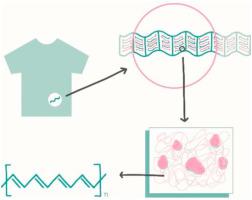Materials Today Physics ( IF 11.5 ) Pub Date : 2021-03-31 , DOI: 10.1016/j.mtphys.2021.100402 Geoffrey Prunet , Florent Pawula , Guillaume Fleury , Eric Cloutet , Anthony James Robinson , Georges Hadziioannou , Amir Pakdel

|
There is a growing demand for flexible and wearable next-generation electronic devices that must be capable of bending and stretching under mechanical deformation. In this regard, energy harvesting technologies have immensely invested in organic and polymeric semiconducting materials due to their large-area synthesis, low cost, low toxicity, high flexibility, and tunable electronic properties. For example, electrically conductive π-conjugated polymers have been investigated in various thermoelectric technologies for producing stretchable, wearable, and light-weight thermoelectric devices that can harvest energy from a temperature gradient and produce electricity with no pollution or moving parts. In this review we initially provide a general overview of the thermoelectric principles and conductive polymer characteristics, followed by the recent progress in their application in flexible and wearable thermoelectric devices. We also evaluate new advances in manufacturing hybrids of π-conjugated polymers with other polymers, inorganic materials, or carbon nanostructures, and their applications in body energy harvesting and smart cooling.
中文翻译:

柔性和可穿戴热电应用中的导电聚合物及其混合物的综述
对柔性和可穿戴的下一代电子设备的需求不断增长,这些设备必须能够在机械变形下弯曲和拉伸。在这方面,能量收集技术由于其大面积合成,低成本,低毒性,高柔韧性和可调节的电子特性而在有机和聚合物半导体材料上进行了巨额投资。例如,已经在各种热电技术中研究了导电性π-共轭聚合物,以生产可拉伸,可穿戴且重量轻的热电器件,该器件可从温度梯度中收集能量,并且在生产过程中不会污染或移动部件。在这篇评论中,我们首先提供有关热电原理和导电聚合物特性的一般概述,其次是它们在柔性和可穿戴热电设备中的应用方面的最新进展。我们还评估了制造π共轭聚合物与其他聚合物,无机材料或碳纳米结构的混合物的新进展,以及它们在人体能量收集和智能冷却中的应用。



























 京公网安备 11010802027423号
京公网安备 11010802027423号